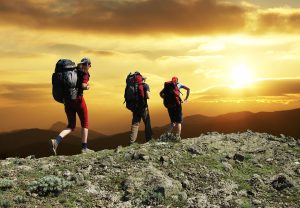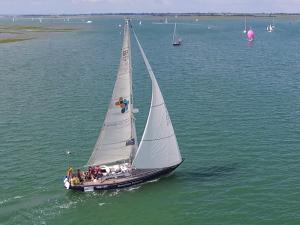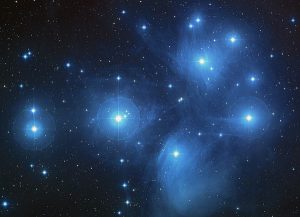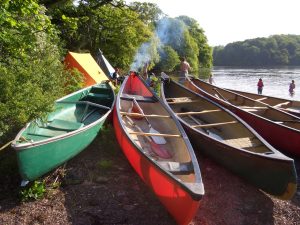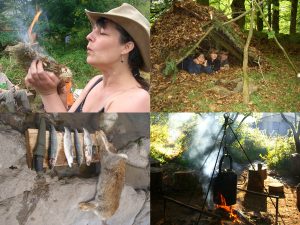Navigation - introduction

““The winds and the waves are always on the side of the ablest navigators.” – Edward Gibbon
Contents
Navigation is the art and science of getting from A to B. People have been navigating since time immemorial, driven by the need to find food and shelter, and later to trade and explore. Before the advent of accurate instruments, early navigators relied on clues in the natural world: seafaring peoples like the Polynesians were able to migrate great distances by observing the behaviour of the sea and its inhabitants, and early traders followed stars or the seasonal (trade) winds.
There are three main types of navigation – map and compass, celestial and natural navigation.

Map and compass
A map is a scaled-down representation of the real world. Topographical maps show terrain, features and elevation using symbols and drawings. Being able to interpret these allows you to move between two places on the ground guided by the map. A good, detailed map with a key will tell you:
-
how steep hills are (by how close contour lines are – the farther apart the lines, the gentler the slope, and the flatter the terrain).
-
the lowest point in a valley if there is water running through it (represented by a blue line).
-
what kind of terrain you’re in or what lies ahead (e.g. if there’s woodland and what kind it is).
-
where areas of open access or pathways are.
-
the distance to your destination. The scale on a map gives the ratio of the distance between two points on the map and the real distance between the same two points on the ground. Scales vary but many maps are drawn at 1:10,000 – i.e. 1 of any unit of measurement on the map corresponds to 10,000 of that same unit on the ground.
A compass indicates direction. It has a magnetized metal needle that rotates to line up with the earth’s magnetic field, with the ends pointing north and south. Markings around the edge of the compass indicate east, west and positions in between. Compasses have one important flaw to be aware of: magnetic north and geographic north are not exactly the same. This discrepancy (known as declination) is greater the closer you are to the North or South Poles, where a few degrees out can put you miles off course. Compass readings therefore have to be adjusted to account for this.

Celestial navigation works by taking a ‘sight’ or angular measurement between a celestial body (sun, moon, stars) and the horizon. It can be used in any environment where a flat horizon is visible. The most obvious setting is at sea but it also works in the desert, since the horizon appears flat at a distance. Conversely, it doesn’t work so well in the jungle or mountains but even in these environments you can make an artificial horizon if you have the right equipment.
With training and experience most people can achieve an accuracy of +/- one or two miles out in their position. To do it, you need to know Universal Coordinated Time (UCT, formerly Greenwich Mean Time, GMT), have an accurate watch and know how much this gains or loses time by (so you can reset it when needed). Distance on the globe is measured in degrees, arcminutes and arcseconds. One nautical mile (1852 metres) equals one minute of angle along a meridian on the earth. Therefore, one minute out equals an error of one nautical mile in your position – fine if you’re aiming for something large like a continent, but if you’re trying to reach a small island in the middle of the ocean, it could mean the difference between life and death.
You also need a sextant, a nautical almanac, a pair of dividers, a set of sight reduction tables (to perform the height and azimuth calculations) and a globe or map. A sextant measures the angle between a celestial body and the horizon. The almanac lists the latitude and longitude directly over which (i.e. at exactly 90° above the horizon) every celestial body will be at every second of the current year. So at any given time you can locate a star, look up today’s date, minute and second and find the exact latitude and longitude of the specific point on earth that is directly under that star at that second. This is known as the star’s geographic position (GP).
Natural navigation is ‘the rare art of finding your way using nature’, i.e. by observing the sun, moon, stars, weather, plants and animals. It’s surprisingly quick and easy to learn basic natural navigation skills and you can even measure rough angles using your own hand. Amazingly, even though we’re all different, we share proportions. For a typical adult with a normal reach, holding their hand up with fingers outstretched, one finger = approx. 2.5 degrees, while a fist = approx. 10 degrees. For greater accuracy you can ‘calibrate’ your hand or a piece of equipment such as a kayak paddle, against a sextant in advance and record the exact measurements. Nature can give us lots of clues about our position and the direction we are facing (see ‘what can I do?’).
A bit of history
Sailors have been extrapolating their position by observing the stars for thousands of years. The principles date back to the ancient Greeks who were the first to measure the radius of the earth and who developed spherical trigonometry. Over the centuries, ever more accurate instruments were invented to measure the angle of celestial bodies above the horizon (equal to degrees of latitude). The sextant was the most accurate, and is still used today, in the age of GPS.
The invention of the compass is usually attributed to the Chinese, who were experimenting with magnetising iron needles some 2,000 years ago, and who went on to develop the first usable navigation compasses around the 11th century.
The Greeks are considered the founders of cartography (map making). The 2nd century astronomer Ptolemy used information brought back by sailors to plot latitude (position on the north-south axis of the earth), longitude (position on the east-west axis), the Equator and the Tropics of Capricorn and Cancer. Centuries later, the development of printing and engraving in 15th century Europe made it easier to copy and distribute maps, coinciding with the era of maritime exploration when the power of seafaring nations depended on the skill of their navigators (and therefore on the accuracy of their charts and instruments). In 1675, the Royal Observatory at Greenwich was founded to measure the position of the stars and moon and intrepid explorers extended the boundaries of the known world, culminating in the discovery of Antarctica, the last uncharted continent, in 1820.

Great breakthroughs in navigation occurred in the late 18th century with the invention of lunar tables and chronometers (which kept accurate time). Captain James Cook (1728-1779) is considered one of the greatest maritime navigators and cartographers; his charts formed the basis of many maps we still use today. Cook was also the first to achieve an accurate means of measuring longitude when he took the first accurate watch on one of his voyages in 1772. Greenwich became the official fixed point of longitude, or Meridian Line, in 1884, and the modern system of time zones was born.
In 1843, the American sea captain Thomas Hubbard Sumner developed the method of celestial navigation still used today, of drawing a ‘line of position’, along which the observer is located, by observing the position of several stars. Later, in the 20th century, the advent of computers speeded up the business of calculating position with sight reduction tables, and the invention of quartz watches in the 1960s finally enabled truly accurate timekeeping.
These days the world has been comprehensively mapped by GPS but this is still not 100% reliable and you’re at the mercy of battery power and intermittent signals, especially in remote areas. Good navigation skills on the other hand can literally mean the difference between life and death in certain situations. If you know how to use them, maps and compasses are 100% reliable, particularly useful in reduced visibility (i.e. at the top of a mountain in rapidly descending fog).
Being able to navigate using the stars with a sextant means you can continually check whether you’re on the right track, both on land and at sea, anywhere in the world. If you rely on GPS alone you won’t know whether it’s right until you get there (or get somewhere else if it’s wrong). In addition, modern boats may have a number of compasses on board which may not always agree with each other – so celestial navigation skills allow you to work out which one is right.

While natural navigation may not be the fastest or most reliable way of getting to your destination, it’s almost always the most interesting. It’s about enjoying the journey rather than focusing on the destination or worrying about punctuality. It also provides great mental stimulation – humans are hard-wired to enjoy following clues and solving problems, and natural navigation gives you an opportunity to do this every time you step out of the door. It’s also great for making you slow down and really look at the world around you – not to mention getting you away from a screen for a bit.
Even if you never need it to get you out of a sticky situation, learning how to navigate is fun, challenging, gets you out of the house and gives you a better understanding of how to move through the world. It connects you to your environment and gives you an added understanding, appreciation and awareness, as well as a greater sense of self-reliance and confidence. It’s also pretty cool to be part of traditions that are thousands of years old.
What can I do?
Map and compass
Assuming you know where you are on the map, place your compass on the map so that the long edge forms a line running between where you are and where you want to go (you could extend this for large distances using a pencil and straight edge). Next, turn the housing on the edge of the compass until the grid lines are aligned with those on the map, making sure that the orienting arrow on the compass is pointing to north on the map. Turn the housing to make the correction for magnetic variation associated with your map (declination). Stand up, holding the compass close to your body (and away from your phone which will interfere with the reading) and turn around until the compass needle sits within the grid north arrow on the baseplate. Look at the direction of travel arrow and off you go. At this point it helps if you can sight a prominent landmark to walk towards, repeating the process when you get there. Identifying landmarks on the map and sighting them as you move through the terrain lets you know you’re still on the right path. It’s also easier and more enjoyable than walking along with your eyes on your compass the whole time.

You can learn to use a map and compass in a variety of terrains, from footpaths and bridleways to open moorland, woodland or mountains. You can teach yourself basic map and compass navigation from books or online resources but it can be confusing at first and some aspects, like taking bearings, are more challenging than others. Therefore, it’s highly recommended to take a professionally-led course if you want to eventually be able to tackle difficult terrain. The National Navigation Award Scheme (NNAS) is a good place to start. It’s important to get out there and practice your skills before you really need them. Learning how to take your bearings at the top of a mountain in zero visibility is leaving it much too late. Start small and work your way up to more difficult terrain. Walking on footpaths is probably the easiest but even here you can practice interpreting the map and comparing it to your surroundings. On open access land you can try programming your bearings into the compass and heading off away from the path to give you a challenge.
To get started you need a good quality compass, such as a Silva Expedition 4 (£25-30) and a detailed, reliable map (Ordnance Survey, OS, retail for around £9 pounds and cover the entire country, while Harvey maps cover national parks and similar areas). For a small fee you can also subscribe to downloadable OS maps. A waterproof map case may also be useful, as well as the kit you would normally take hiking: good quality, waterproof boots, all-weather clothing, water bottle, food and a small first aid kit. Emergency shelter such as a bivvy bag can be a life-saver if you get stuck in bad conditions in the mountains. Always take a fully-charged mobile phone in case of emergency and let someone know where you’re going and when you expect to be back.

Sight a well-known star with your sextant and record the angle above the horizon. As an example, let’s say you see a bright star (say Sirius, or Vega) at 60° above the horizon. Check the star’s GP in the almanac, perform the sight reduction calculations and, on a globe or map, mark the GP with an X. Then take a pair of dividers, set them to 30° and draw a circle with X at the centre. Since one degree of latitude = 60 nautical miles the circle will have a radius of 30 nautical miles and you will be somewhere along that line. Repeat for another star. The second circle will bisect the first at just two points and you will be at one of those points. Since these are thousands of miles apart, you can probably rule out one of them just by knowing which hemisphere you’re in. However, for real accuracy you can sight a third star to get your exact position. Obviously, the world is turning all the time and each star’s GP is changing every second so this needs to be taken into account as you plot your position.
You can learn the basics of celestial navigation online or from books. However, there is a LOT more to it than we have room for here, so a professionally-led course is highly recommended and you certainly need to be able to sail, or go with someone who can, before you even think about heading out to sea in the dark. You don’t need to be an expert astronomer, but it does help to familiarise yourself with some of the brighter constellations around which celestial navigation has developed. You can buy a sextant and other equipment online or from stores, and a cheap one is quite acceptable for learning.
There are several means of navigating naturally, but by the stars has got to be the most romantic. Without instruments you can’t perform the calculations used in celestial navigation but certain stars are still helpful indicators of direction. For example, the North Star, or Polaris, always sits directly above true north and can be found directly above the two stars forming the outside edge of the Plough (aka Ursa Major, Saucepan or Big Dipper). Although the Plough rotates through the night sky, its position relative to the North Star never changes. In the northern hemisphere the North Star can give your approximate latitude, since this equals its height above the horizon and this you can roughly measure with your fist. Other useful constellations are Cassiopeia, found on the opposite side of Polaris from the Plough, and the three stars in Orion’s belt, the first of which always rises one degree east and sets one degree west of true east and west, respectively, anywhere in the world.
The position of the sun is also useful for finding east and west. However, due to the tilt of the earth in the UK it only actually rises due east and sets due west on the equinoxes, around March 20 and September 22. The rest of the year, the greater your latitude and the closer you are to one of the solstices, the further from east and west it is. In fact, in midsummer in the UK, on June 21 the sun actually rises closer to north-east and sets closer to north-west. On December 22, midwinter, it rises closer to south-east and sets south-west. You can also use the position of the sun at midday to find north since the shadow cast by an upright stick planted in the ground will form a perfect north-south line when the sun is highest in the sky.
Navigating using the moon is a bit trickier. You can still use the stick shadow method on a bright night but you’ll have to stay up half the night to do so. Failing that, a crescent moon lends itself nicely to determining approximate direction. The sun and moon move across the sky to the east or west of each other, with the curve of the moon’s bright side always pointing towards the sun. When a crescent moon is fairly high in the sky, you can mentally draw a line between the two ‘horns’ and run it down to earth. A line at right angles to east-west must run north-south, so your imaginary line will hit the earth approximately due south (in the northern hemisphere).

As well as making use of the stars, the seagoing Vikings and Pacific Islanders could navigate using water and weather by reading the swell of the sea, its colours, landmarks and the behaviour of its inhabitants. The direction of the wind, the smell of the air or the taste of the water told them how close they were to land. They could also read the direction, size and speed of waves, and the patterns caused by the sea bouncing off or travelling around a nearby island. Some Pacific islanders still retain these skills today. Similarly, desert-dwelling nomads and the Inuit are able to tell direction from the way ridges in sand dunes or ice point, formed by the prevailing wind. In the UK, if you know that the wind predominantly blows from south-west to north-east then clouds moving across the sky will give an indication of direction.
Seafaring peoples also navigated by observing the behaviour of animals like whales and dolphins, which gather in certain locations at specific times of year to feed or mate. The presence of birds was also a useful indicator of land as most species will only fly a certain distance away from it. On dry land, spiders’ webs built in the lee of buildings or trees will indicate north-east, being sheltered from the south-west wind. Similarly, look for scraps of wool and damage to gorse bushes left by sheep sheltering from a sou’wester. Plants, including trees, are also great indicators of prevailing wind direction and can sometimes be seen ‘combed’ from south-west to north-east. Plants can also tell you which way is south. All green plants need sunlight to thrive and trees tend to grow asymmetrically, with denser, heavier growth and straighter branches on the southern side. Northern branches will grow up and over towards the light, while flowers such as daisies will turn to face south. Plants can also tell you about the terrain you’re in or what’s up ahead. Willows and rushes indicate the presence of water, for example.
You can even navigate in the urban environment. In the centre of cities, people flow from stations in the morning, and towards them in the evening. Look for weathering and erosion on the south-west side of older buildings. Observe which way the satellite dishes are pointing. All satellites are ‘parked’ in a geostationary orbit over a particular point on the equator, so in the UK all dishes point south. Variations in the direction of the dishes in a particular area can even give you an idea of who lives there: in a predominantly Asian community, for example, their dishes will be pointing at their home country’s satellite.

You can practice natural navigation any time, anywhere if you know what to look for. You can learn the basics by taking a course or reading up on it in books. Then you start testing your skills in the great outdoors. For example, you could go on a guided walk and record your observations along the way, comparing them to the map at the end to see how accurate you were.
Natural navigation isn’t about doing without technology; it’s about trying to see if you can work it out from nature first. It’s rarely impossible but bear in mind you are at the mercy of changing weather conditions and environment so take all the usual precautions and kit when heading out into nature. Finally, natural navigation is most fun when you can roam freely, following where nature leads you. However, if you aren’t on open access land, make sure you respect private property, livestock and stick to rights of way.
Specialist(s)
Thanks to Tristan Gooley, the Natural Navigator, David Burch of Starpath and Leon Durbin of Wildwood Navigation for information.
The specialist(s) below will respond to queries on this topic. Please comment in the box at the bottom of the page.

Tristan Gooley is an author and natural navigator. Tristan set up his Natural Navigation School in 2008 and is the author of the award-winning and bestselling books, The Natural Navigator (2010), The Walker’s Guide to Outdoor Clues & Signs (2014), How to Read Water (2016) and Wild Signs and Star Paths (2018), some of the world’s only books covering natural navigation.

